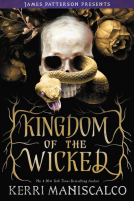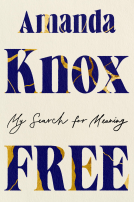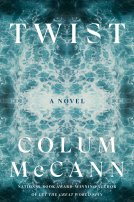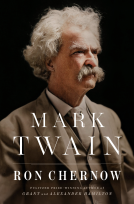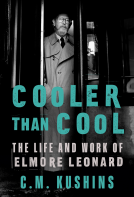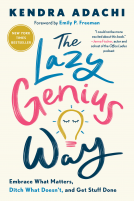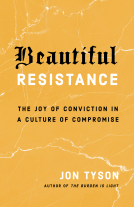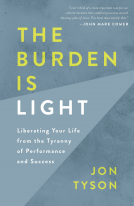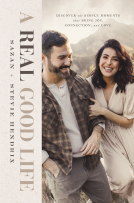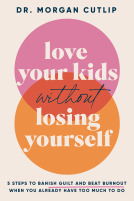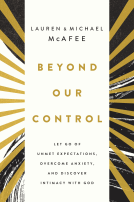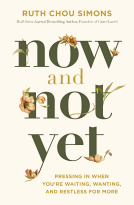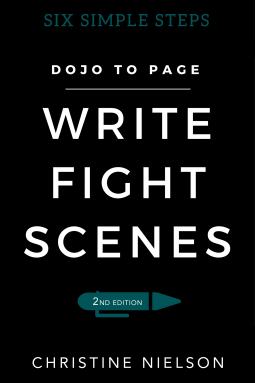
Write Fight Scenes
Six Simple Steps to Action Sequences That Will Wow Your Readers
by Christine Nielson
This title was previously available on NetGalley and is now archived.
Send NetGalley books directly to your Kindle or Kindle app
1
To read on a Kindle or Kindle app, please add kindle@netgalley.com as an approved email address to receive files in your Amazon account. Click here for step-by-step instructions.
2
Also find your Kindle email address within your Amazon account, and enter it here.
Pub Date Jan 31 2021 | Archive Date Nov 27 2020
Talking about this book? Use #WriteFightScenes #NetGalley. More hashtag tips!
Description
Your Badass Guide to Writing Fights Right! These six simple steps will shift your fight scenes from good to great.
Your Badass Guide to Writing Fights Right! These six simple steps will shift your fight scenes from good to great.
Advance Praise
"An excellent and concise how-to. Highly recommended." - Amazon Reviewer (first edition)
"An excellent and concise how-to. Highly recommended." - Amazon Reviewer (first edition)
Available Editions
| ISBN | 9781950546138 |
| PRICE | $2.99 (USD) |
Featured Reviews
I love books about the mechanics of writing. This is a great example of an easily readable, succinct guide that focuses on a little covered area of many stories, writing a great action scene. Christine is a self proclaimed "rental ninja" who explains in clear detail the essential elements of writing a believable, heart-gripping fight scene in any novel. Her advice is practical and includes several great exercises to prompt real thought about the aspects that might make your fight scene much stronger. My favorite piece of advice was to block out the fight using gummy bears and mark them in places they'd have been injured.
Thanks to Netgalley for a copy in exchange for my honest opinion.
Who doesn't love a book which manages to utilize the sentence "I felt like a granddaddy cobra" in a genuinely useful manner?
Christine Haggert has managed what I always needed but never quite realized I wanted: an actual, useful guide to writing fight scenes. She tackles this topic in a friendly, conversational voice rather than a detached and cold one; rather than feeling intimidated as I often do with guidebooks, I felt encouraged and cheered on by someone who understands the struggle and wants to make things easier. Not only does she explain how to set up and handle fight scenes, but she also takes the time to explain the nuances of how to handle the repercussions and how to believably write characters who win (or lose) these altercations - and when it's best to leave out the detailed fight scene altogether.
I already knew I was in love with this book by the second chapter, but once I reached the section where she insists that writers should actually keep track of injuries and cover the lingering wounds both psychological and physical... There were stars in my eyes and little heart emojis all over the place, I tell you. Okay, not literally, but I was thrilled all the same!
One of my biggest pet peeves in writing - both televised and literary - is watching a character get beaten half to death only to have their wounds make zero impact within ten minutes or less. I gave up on a television show I once loved, in fact, when my favourite character went from being nearly presumed dead with a disfigured face and flayed skin to having a small bandage and perfectly functional eyes in the next scene, not even a black eye or 'permanent' scar. (I can understand the limitations of makeup budgets, but at least make it last the entire episode which only spans a day to a week.) Given that few other fans of the show cared so much about this, I thought I was just crazy for caring so much about these kinds of details. I thought maybe I was doing it wrong myself when injuries in my writing held realistically timed repercussions for the characters. Heck, I thought it was just my OCD flaring up and making me latch onto things which others found meaningless. So reading this published author explain that these things truly are important? Yeah, that made me feel validated. It made me feel like maybe I have what it takes to become a published author myself someday and that there ARE people out there who'll care enough to appreciate the effort and thought I place into these things.
But I digress. That's but a small blip on the radar when it comes to this book. Written with the paper format in mind - Haggart often encourages readers to write on the pages for future reference - this is almost a workbook or a journal of sorts: the aspiring author's scratchpad for figuring out the elusive beast that is Fight Scene Writing. It includes step-by-step guides, cheat sheets, recommendations, and - for want of a better term - discussion questions to ponder about the characters involved, the environment, and the fight itself. In fact, it's made to guide you through actually writing a fight scene of your own while reading; the only reason I didn't do such is because I'm currently on a binge of writing things without combat. Maybe I'll come back to this another time and give it a go!
Overall, I'm pleasantly surprised that a book which is so relatively short packs such a punch... pun intended. Some of the information was new to me, even though I've read what must amount to hundreds of "how to write a fight scene" guides online over the past two decades. For that alone, I say this book is absolutely worth every penny for those considering the purchase: it brings new information and techniques to the table, in a way which doesn't act self-superior like so many other guides.
That said, I wouldn't call this book perfect. The fact it references character sheets and anatomy diagrams available on the author's website rather than providing those within the book is somewhat detrimental to following the guide. After all, not everyone has constant internet access or even owns a printer (or has access to one), and I tend to expect that all necessary instruments other than perhaps an ink pen are included in workbooks and guidebooks. It's for this reason - and this reason alone - that I chose a 4-star rating instead of awarding 5 stars. I hope to see this change when the new edition is published, rather than remaining as-is.
{ Note: I received a digital review copy of the second edition of this book through NetGalley. My review is solely my own opinion, and the only condition for receiving this review copy was that, if I choose to provide a review, it be genuine and honest. }
I`ve received this book from <i>NetGalley</i> in exchange for an honest review.
As I was drafting and I had some fight scenes sketched but did not know how to land them (pun intended) I found this book quite in handy. <b>It is a very short one</b>. You can quickly flip through it to reach the info that interests you.
It is divided in clear cut parts that take you from the beginning to the end. For example I thought that it was useful to read the advice about connecting your character`s fighting technique with its childhood experience.
So, small book, but good book.
 Dan O, Bookseller
Dan O, Bookseller
Thanks to Net galley for an ARC on this title.
Christine Nelson's Write Fight Scenes: Six Simple Steps to Action Sequences That Will Wow Your Readers is a small ebook that for writing action scenes that are physical for both the characters and the readers. The approach is simulate to screen writing, understand your characters and what violence means to them to make the scene more visceral and mean more. Most writers use an right scene more as a way of making the character more alpha than other characters, Ms. Nelson's approach is to make it as important to the plot as it can be. A small book, with many good writing ideas.
 Audi N, Reviewer
Audi N, Reviewer
Christine Nielson has a karate background (black belt) and inspires the reader to write the best fight scenes imaginable using her experience. Perfect for the aspiring writer who's stuck on how to make their fight scene epic.
 Katie E, Reviewer
Katie E, Reviewer
Thanks to Netgalley and the publisher for an advanced copy.
Write Fight Scenes is an effective writing guide on exactly what the title says, writing fight scenes. For a writing guide, the book is short. However, it does the job it promises to do. It gives a writer inexperienced in writing fight scenes a concrete plan to write realistic fight scenes. The advice covers the realities of fighting (pain, recovery, etc), while also covering how the fight scenes will be character-dependent. It's not the absolute most-comprehensive guide to fighting. It doesn't compare medieval sword-fighting to modern ring boxing or anything of that sort. It's a general guide that will be a great jumping off point for writers. Some writing guides leave me feeling like I'd have no idea how to cover the gaps they left. After reading Write Fight Scenes, I feel confident that I can use the guide to draft a fight scene and figure out what's missing from my scene to look up more detailed information. I recommend this book to anyone who has no idea how to begin writing a fight scene.
This book is short, sweet and super helpful!
I am not currently working on anything involving a physical fight scene, but I'm really glad I've read this - it covers more than I expected it to. Not only does it focus on the fight scene itself (mechanics such as how long the fight is likely to last) but it also considers other vital aspects - what is your characters' feelings about violence? What about the culture or religion they grew up in, or their past experiences, how do those impact it? What kind of physical condition are they in? What will they experience in the aftermath of the fight?
Ultimately, the advice in this book not only seeks to improve how you write fight scenes itself; it also makes you approach your characters from new angles, and contains lessons you can apply to all parts of your writing.
(With thanks to BooksGoSocial and NetGalley for a copy of the ebook in exchange for an honest review)
 Lora M, Reviewer
Lora M, Reviewer
This is a short book with some good advice for aspiring writers. It tells you how to make a "rap sheet" for characters who will get into a fight so that you know their backgrounds, their skills, their mental attitudes and anything else that might affect how they respond in a confrontation. It also gives some home truths about how fights actually happen and how long they (don't) last for the sake of realism.
Much of the author's perspective comes from experience in martial arts, but most of what she talks about can easily be transferred to other fight scenarios, like medieval sword fights and such.
The one thing she doesn't go into is how to describe actual moves. For this, you need to research the fighting technique you intend to depict. She does, however, finish with some excellent advice about taking the aftermath of a fight into consideration and reflecting that in your plot. Is your character someone who normally has fights? Was this one a first? What physical AND psychological effects is s/he feeling after the actual battle?
Despite being short, the book covers things not often considered and brings the writer's attention to dealing with those details to make the fight scene believable.
Christine Nielson’s ‘Write Fight Scenes’ is a simple guide introducing you to six steps of writing fight scenes. Though very short, ‘Write Fight Scenes’ pinpoints the essence of writing fight and action scenes. It’s also very easy to navigate. From thinking through your target audience and characters’ motivations and characteristics (both physical and mental) to advice regarding how to structure your fighting scenes and what verbs to use, ‘Write Fight Scenes’ is a quick tool to get you started. Though I wished that some aspects were explored in a greater depth, I think that this guide can be useful for both new writers and those who have been writing for a while. The author’s tone is conversational and her advice honest and full of ways of tackling the issue and approaching the next steps in the creation of fight scenes.
 Reviewer 333855
Reviewer 333855
Perfect companion for any author gearing up to write fight scenes! This is something I’ve struggled with, and look forward to getting myself a new copy of this book to add to my collection of books on writing craft.
Review copy from NetGalley
 Michelle C, Reviewer
Michelle C, Reviewer
Write Fight Scenes: From Dojo to Page by Christine Haggerty is book 2 in the Six Simple Steps series. As a newbie in writing, I found this book helpful. It does a great job being brief and still helping you figure out the why and how before a fight occurs. This book is not a comprehensive guide to fighting, and you will definitely need another resource to describe how the actual fight occurs. But it is still a valuable guide, especially for newbies like me. I received a digital copy of this book from the publisher with no obligations. These opinions are entirely my own.

